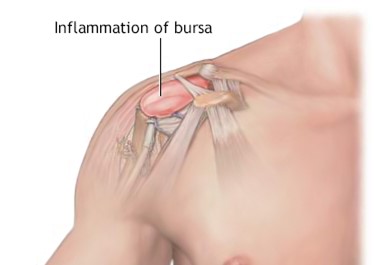Causes and treatment options
WHAT IS BURSITIS
Bursitis is a condition characterized by the inflammation of a bursa, which is a small fluid-filled sac that acts as a cushion between bones, tendons, and muscles near joints. Bursitis can occur in various parts of the body, such as the shoulder, elbow, hip, knee, and ankle. It is often caused by repetitive movements or positions that put pressure on the bursa, leading to irritation and inflammation.
The most common type of bursitis we see at Physio Elements is shoulder bursitis or sub acromial bursitis and hip bursitis or trochanteric bursitis. We have helped thousands of patients with bursitis conditions coming to us not only from near Kilsyth, Croydon and Mooroolbark but travelling to us from suburbs further away such as Heathmont, Ringwood and Boronia.
CAUSES:
1. Repetitive movements: Activities that involve repetitive motions, such as lifting heavy objects, throwing, or overhead movements, can lead to bursitis.
2. Overuse or strain: Overusing a joint or muscle group without adequate rest can cause bursitis.
3. Trauma or direct injury: A direct blow or trauma to a joint can result in bursitis.
4. Infection: In some cases, bursitis can be caused by an infection in the bursa, leading to septic bursitis.
5. Underlying medical conditions: Certain medical conditions, such as rheumatoid arthritis, gout, or diabetes, can increase the risk of developing bursitis.
PHYSIOTHERAPY TREATMENT:
Aim is to reduce pain, inflammation, and restore normal function.
1. Rest: Resting the affected joint is essential to allow the inflammation to subside. The physiotherapist may advise avoiding or modifying activities that aggravate the condition.
2. Ice therapy: Applying ice packs to the affected area can help reduce inflammation and alleviate pain. The ice should be wrapped in a thin cloth and applied for about 15-20 minutes at a time, multiple times a day.
3. Physiotherapy exercises: The physiotherapist will design specific exercises to improve joint mobility, strength, and flexibility. Gradual and controlled movements not only of the shoulder joint itself but also of the scapular thoracic i.e. the shoulder blade are used to avoid exacerbating the inflammation.
4. Ultrasound and other modalities: Therapeutic ultrasound or other modalities may be used to promote tissue healing and reduce inflammation.
5. Joint mobilization: Gentle joint mobilization techniques may be applied to improve joint movement and reduce stiffness.
6. Soft tissue mobilization: The physiotherapist may use manual techniques like massage to release tension and tightness in the muscles around the affected joint.
7. Posture and movement correction: Correcting posture and movement patterns can reduce stress on the affected bursa during daily activities.
8. Home exercises and self-management: The physiotherapist may provide a home exercise program and advice on self-management techniques to promote healing and prevent recurrence.
9. Gradual return to activity: Once the inflammation subsides and the condition improves, the physiotherapist will guide the patient in a gradual return to regular activities and sports.
10. In some cases an ultrasound guided steroid injection by a radiologist or shoulder specialist may be indicated and is then followed by physiotherapy to regain full movements and functions after an initial few days of rest.
It’s important to consult a healthcare professional or a qualified physiotherapist to get an accurate diagnosis and an appropriate treatment plan for bursitis. They can tailor the treatment to the specific needs and condition of the individual.
If you need any guidance feel free to book in with one of our Physiotherapists at Physio Elements, 552 Mt Dandenong Road, Kilsyth by clicking on this link. https://physio-elements.au1.cliniko.com/bookings#service or call 03 9729 7777 to speak to our friendly reception staff.

